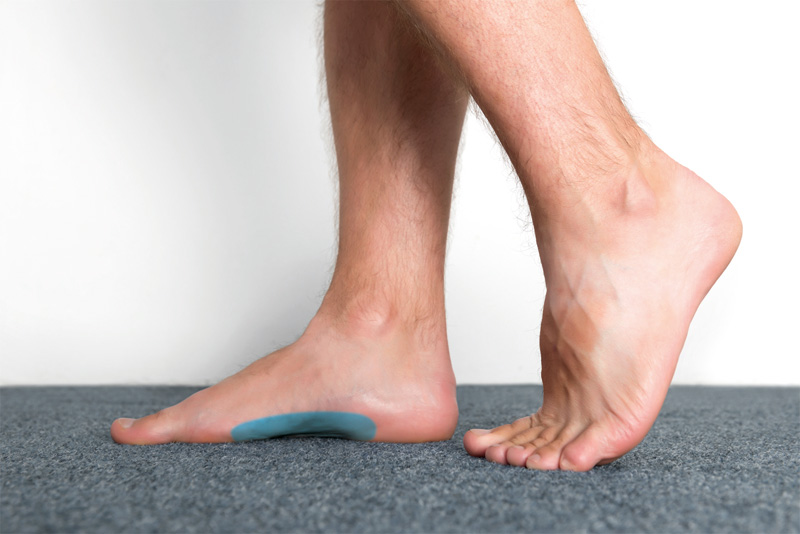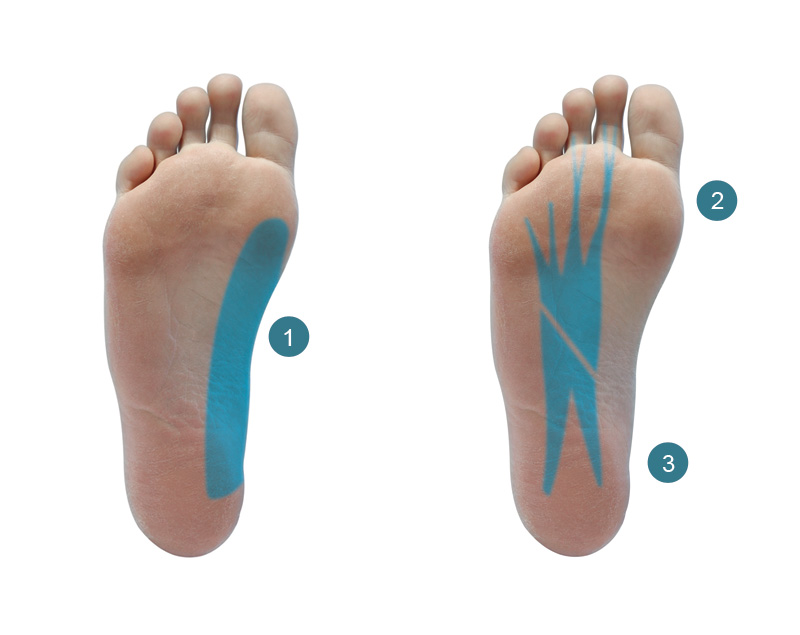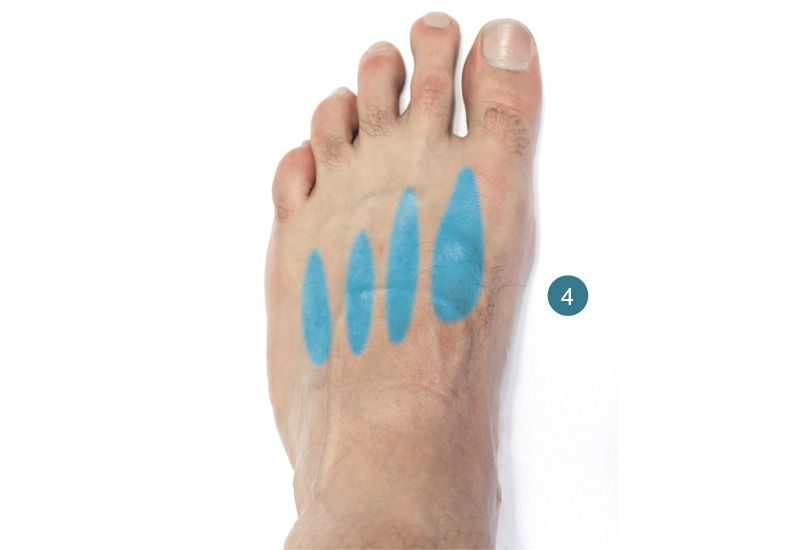Definition: Core stability of the foot improved by foot core strengthening.
Stability of the foot grip depends on the capacity of the foot to maintain its biomechanical properties in order to exercise its stabilising function. The foot comprises a “passive” frame made up of bones, joints and ligaments to keep the whole construction together. This passive structure is supported by an “active” structure of about 20 muscles that have their origins and insertion at the foot. The distinction is made between these muscles, called “intrinsic” and the “extrinsic” muscles which have their origin at the leg, crossing the ankle insert at the foot. When talking about foot core strengthening, we refer to the improvement of muscle tone of these intrinsic muscles: they have to be able to withstand exertion and endure stress in a stretched position. They might not have a proper propulsive function, however they participate by optimising the elastic properties of the plantar arch. Under weight bearing, balance depends on the stability of the foot on the ground and its prompt adjustment to any new situation. The intrinsic muscles contribute to this stability.
The importance of foot core
Wearing shoes, as part of our modern society, leads to deconditioning and even atrophy of foot musculature by limiting the feet’s movement. The earlier shoes are worn in a human’s life, the more development of these muscles is hindered. In older people, balance problems are amplified by this atrophy.
Implications on gait
The plantar arch has a tendency to deform and collapse under the forces applied during exercise. These forces are even higher when the terrain is uneven and the speed of gait is higher. The intrinsic muscles play a crucial role in maintaining the dynamic reactive structure of the foot. Balance in unipedal stance cannot be achieved without this function.
FHL and intrinsic muscles of the foot
Functional Hallux Limitus, by its tenodesis effect on the flexor hallucis longus muscle, predisposes the foot arch to collapse and the fore foot to deform. To enhance the effect of foot core, release of the flexor hallucis longus muscle is necessary through manipulation of the subtalar joint and stretching exercises (the “vacuum cleaner cord” manoeuvre) to ensure free excursion of the tendon. This approach is elementary for successful treatment.

The principal muscles responsible for the active support of the plantar arch are:

1. Abductor hallucis
2. flexor digitorum brevis
3. quadratus plantae

4. the dorsal interossei
These muscles are the primary target of the re-education regime proposed in this chapter due to their intimate interaction with the flexor hallucis longus.
Strengthening of these muscles can be accomplished by:
- active physiotherapy
- electrostimulation
Significant positive results can be obtained by combining the two.
Physiotherapy extends over a period of 6 weeks at a pace of 1-2 sessions per week for a total of 9-12 sessions with multiple exercises, like those instructed in the following videos:
(interactive videos)
The patient is advised to perform these exercises at home 1-2 times daily.
All daily or sports activities performed barefoot on non-traumatising surfaces are beneficial for foot health and balance control.
The last step in intrinsic muscle reinforcement is that of education and practice of barefoot running. Running sessions using so-called “minimalist” shoes (no heel lift and minimal shock-absorbment) and with attention to fore foot footstrike are appropriate. The assistance of sports professionals to help with proper education and supervision during training is crucial as poor technique can lead to overuse injuries.
Physiotherapy exercises are performed barefoot as well, here demonstrated by a patient with the aid of a chair where he/she is seated.
It is also possible to perform these exercises while standing on one or both feet on more or less stable surfaces depending on the level of re-education. It is advised though to start on one foot only at the beginning of therapy. No warming up is necessary for these exercises.
- 1. Short-foot or dome exercise: stimulation of abductor hallucis, flexor digitorum and quadratus plantae. The difficulty of this exercise is to contract the plantar arch without producing gripping motion of the toes. The objective of this exercise is to strengthen and tone the plantar arch.
- 2. Toe-fanning exercise aims at the dorsal interossei muscles. These muscles are responsible for maintaining metatarsal position under weight-bearing.
- 3. “Drawing the snail”: this exercise requires some probes. A chair, a sheet of paper (normal A4) and a pen or pencil are needed. This exercise is aimed at the adductor hallucis muscle which, although not directly contributing to plantar arch stability, along with the flexor digitorum brevis, synergises during the propulsive phase of gait. This exercise is excellent for the overall dexterity of the foot.
Electrostimulation
Electrostimulation is the reinforcement of specific muscles through electrical stimulation. Electrodes placed on the plantar and medial aspect of the foot by a health professional allow the passage of a weak electrical current that induces muscle contraction. This method can be combined with unipedal or bipedal exercises on even or uneven surfaces, depending on the level of the patient.
 EN
EN  DE
DE  ES
ES  FR
FR 